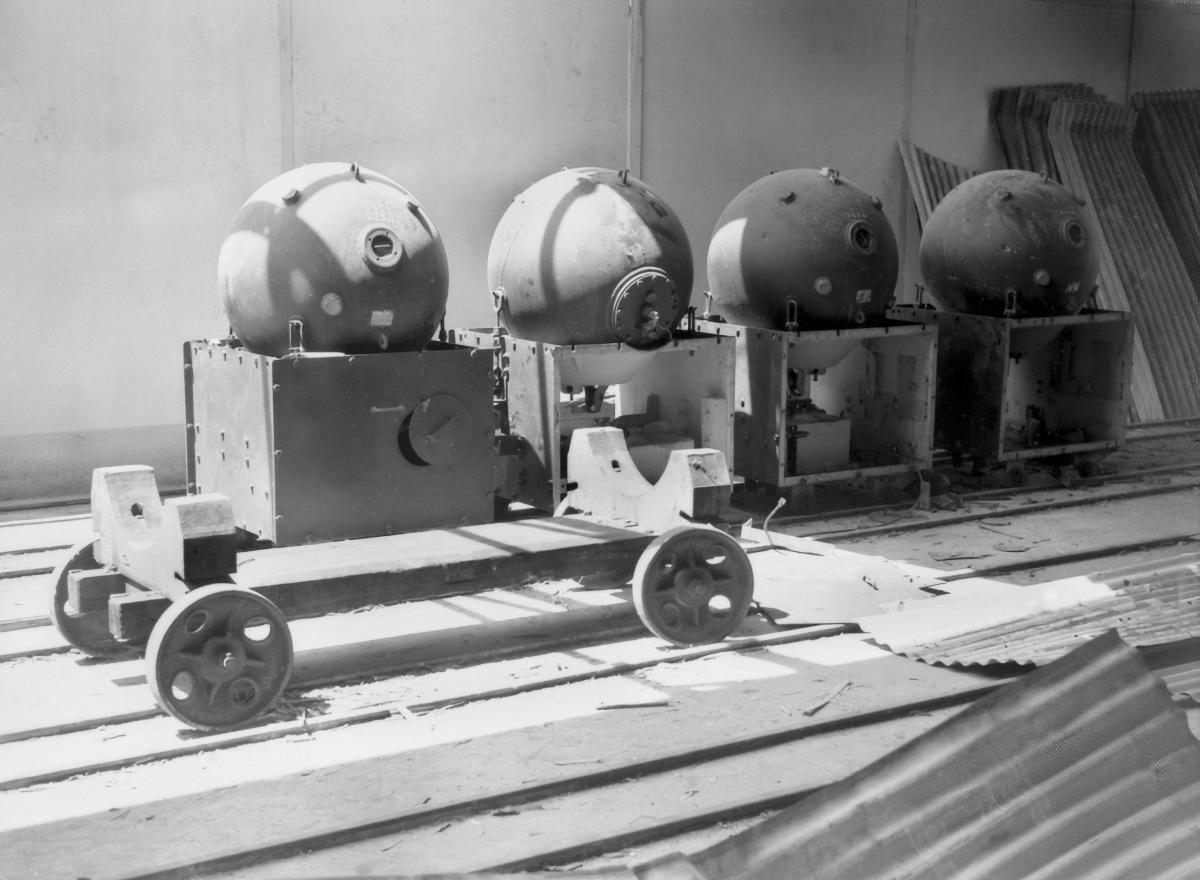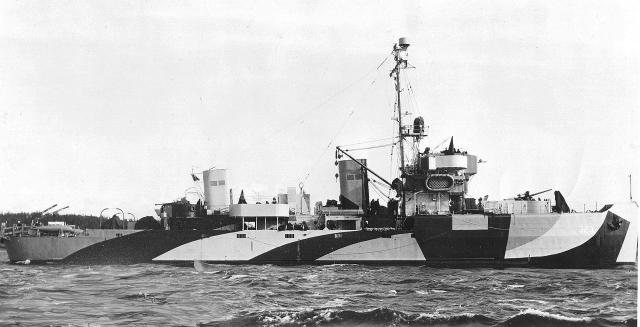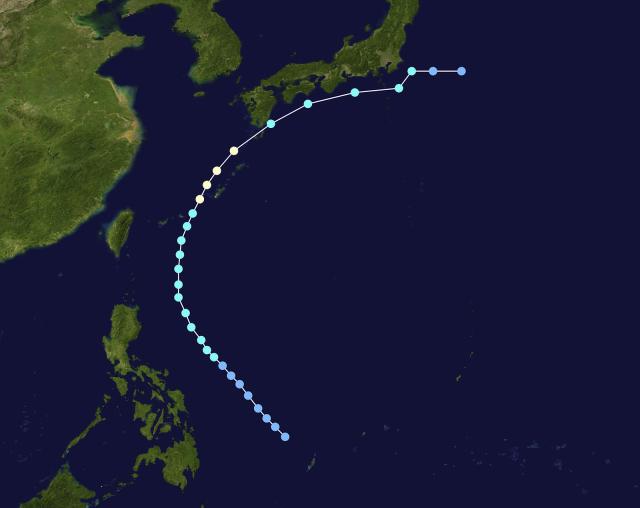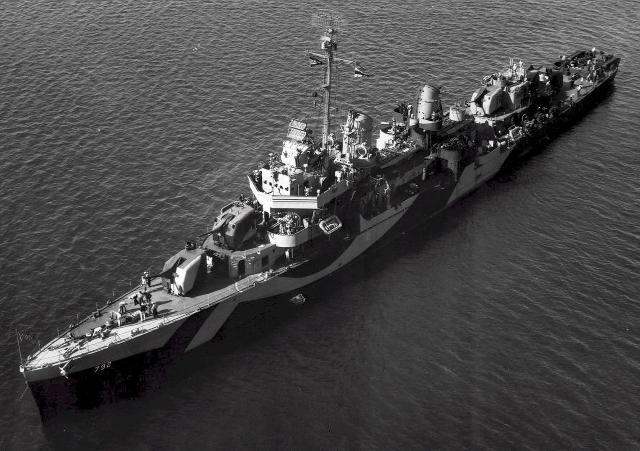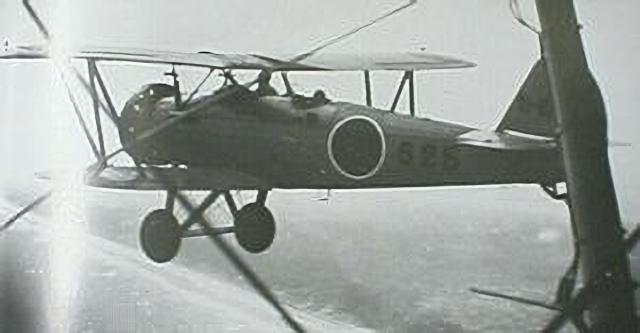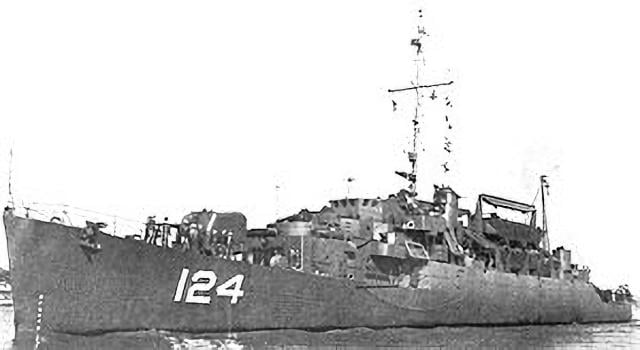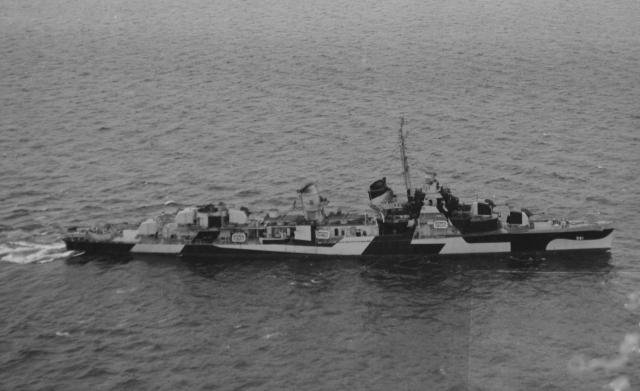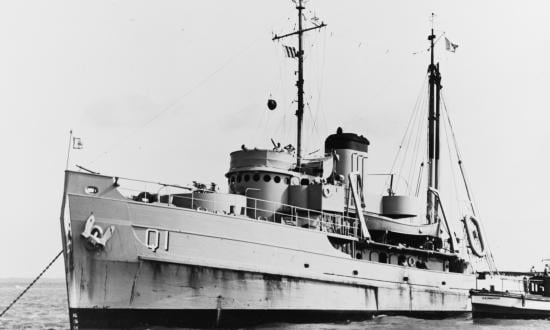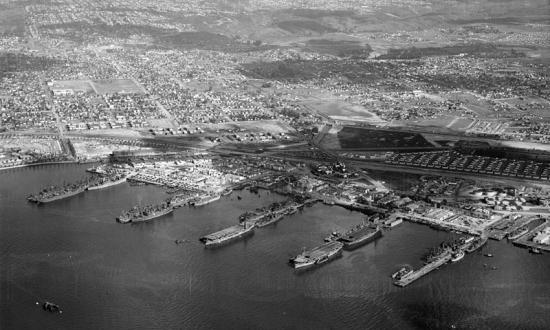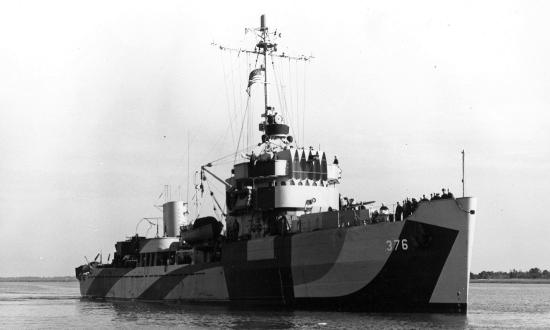Last time when we left the USS Sway (AM-120), she had just arrived in Buckner Bay, Okinawa. Though the Battle of Okinawa was considered over, there was still a great deal of minesweeping to be done. The invasion of Japan was being planned, and a desperate enemy continued suicide tactics in hopes of driving down Allied morale and destroying assets needed for the invasion.
All entries are from the ship’s war journal unless otherwise noted.
July 15, 1945.
Reported to C.T.G. 39.11an assigned to CTU 39.11.6 replacing USS Triumph (AM-323).
July 17, 1945.
1543—Under way to carry out Typhoon Plan X-ray in company with CTU 39.11.
The typhoon was a plan to move the vessels out of Buckner Bay to safety. Pacific typhoons could be extremely powerful. A typhoon in December 1944 had cost the Third Fleet three destroyers,146 aircraft, and 790 sailors dead or missing. Ships fare better at sea than in port, which is why even today large naval bases in the path of a hurricane or typhoon will still send all ships capable of doing so out to sea if a threat is imminent.
This particular typhoon, named Opal, was a Category 1 storm, and its maximum sustained recorded winds were only 75 miles per hour, which is barely strong enough to be categorized more than a tropical storm. Opal passed to the west of Okinawa and ultimately made landfall in Japan. The ships would remain at sea until the 21st.
July 21, 1945.
Anchored in Buckner Bay for refueling.
July 22, 1945.
0819—Under way to sweep area JUNEAU in company with T.U. 39.11.6 in accordance with CTG 39.11 Op-Order CominPac No. 7-45.
July 23, 1945.
0550—Streamed "O" type gear; 300 fathoms port and starboard with 40 fathoms depressor and e "T" Mk. 2 cutters and 1 Mk. 11 cutter on each side. Sweeping in port echelon formation. 1546—sweep gear recovered, and executed night retirement plan as above.
July 24, 1945.
0624—Streamed "O" type gear as before. 0958—Swept (1) Jap moored mine at 26* 53' N and 124* 45' E. 1510- Recovered gear. One (1) "T" Mk II Cutter expended. 1540—Executed night retirement plan as above.
July 26, 1945.
0549—Streamed "O" Type gear as above. 0945—Cut one (1) Jap moored mine at 26*, 37' N and 124*, 21'E. Recovered sweep gear: one (1) "T" MK II cutter expended. 1749—Executed night retirement plan as above.
July 27, 1945.
0552—Streamed "O" type gear as above. 1342—Recovered all sweep gear. 1430—Executed night retirement plan as above.
July 28, 1945
0609—Streamed "O" Type gear as above. 1245—Sweep gear on port side parted due to faulty shackle, lost 300 fathom sweep wire 100-ft. float pendant, three (3) Mk II cutters, 1 Mk 11 cutter, 1 kite and port bridle. 1350—Executed night retirement plan as above.
July 29, 1945.
0544—Streamed "O" type gear as above for check sweep of JUNEAU sweeping area. 1150—Lost propulsion due to burned out resistor and recovered gear. 1439—Re-streamed sweep gear. 1500—Rejoined sweep formation. 1920—Recovered Sweep gear, expended 3 "T" Mk II cutters. 1940—Executed night retirement plan as above.
As you can see, today was a relatively quiet day for the USS Sway; however, such was not the case for all ships that were serving in the area. The Japanese military had begun using kamikaze attacks before Okinawa but they had reached their peak during the battle here. By this point in the war they were few and far between but not nonexistent. My grandfather talked about them in an interview:
“We were assigned to ring patrol [a circle of ships around the island] to keep enemy aircraft, subs, and surface craft away from our landing craft and Marines/soldiers on the beaches. Four times on the ring patrol we were involved with kamikaze attacks; however, we were never hit, probably because we were not a prime target like the troop carriers and battleships.”
Looking at historical records, three of those attacks occurred on the date of the last entry. Two ships were damaged and one was sunk. The destroyer USS Callaghan (DD-792) was struck by a Yokosuka K5Y biplane on the starboard side, where one of its bombs penetrated the aft engine room. The destroyer flooded, and fires ignited the antiaircraft ammunition. She went down with 47 members of her crew. This was the last ship sunk by a kamikaze attack during the war.
July 30, 1945.
0508—Streamed "O" type sweep gear as above for check sweep of JUNEAU sweep area. 1600—Left sweeping formation. 1815—Recovered all sweep gear, expended 1 "T" Mk II cutter. 1940—Proceeding to OKINAWA in accordance with CTG-39.11 300326 as part of screen for CTG 39.11.
July 31, 1945.
1249—Anchored in Buckner Bay, Okinawa. Reported to CTG 95.4 for logistics and further assignment in accordance with CTG 39.11 dispatch 300325/July
With the last full month of the war coming to a close, the following month would see more minesweeping operations, a fourth kamikaze attack—and the use of a new weapon that would forever change the world.
(U.S. Naval Institute Photo Archive)



